AI Assistant Introduction
AI Assistant is an advanced digital solution designed to make your customer services and business processes smarter and more efficient. It automates customer interactions, takes over repetitive tasks and reduces your employees' workload by accelerating processes. This way, both operational efficiency increases and customer satisfaction is brought to the highest level.
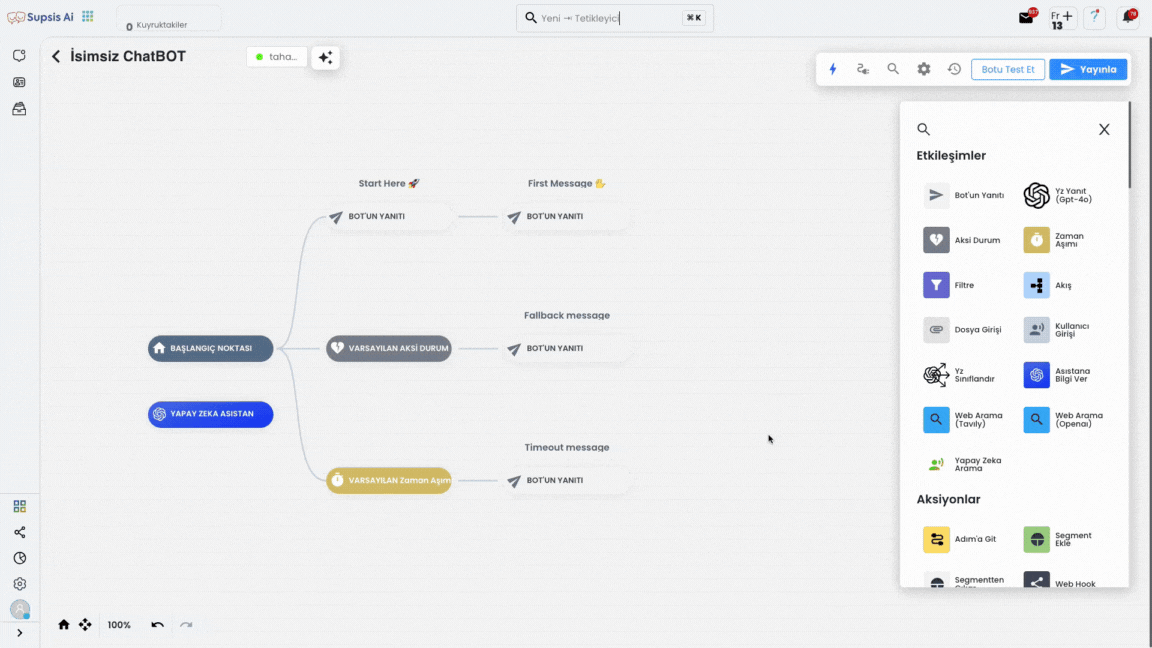
First, after logging into your chatbot setup, add the "AI Response (GPT-4o)" block to your flow using the drag-and-drop method. This block transfers control of the chat flow to artificial intelligence and makes your chatbot AI-powered. This way, your bot can give more natural, flexible and intelligent responses. You can make additional configurations in the next steps to create more comprehensive and personalized responses.
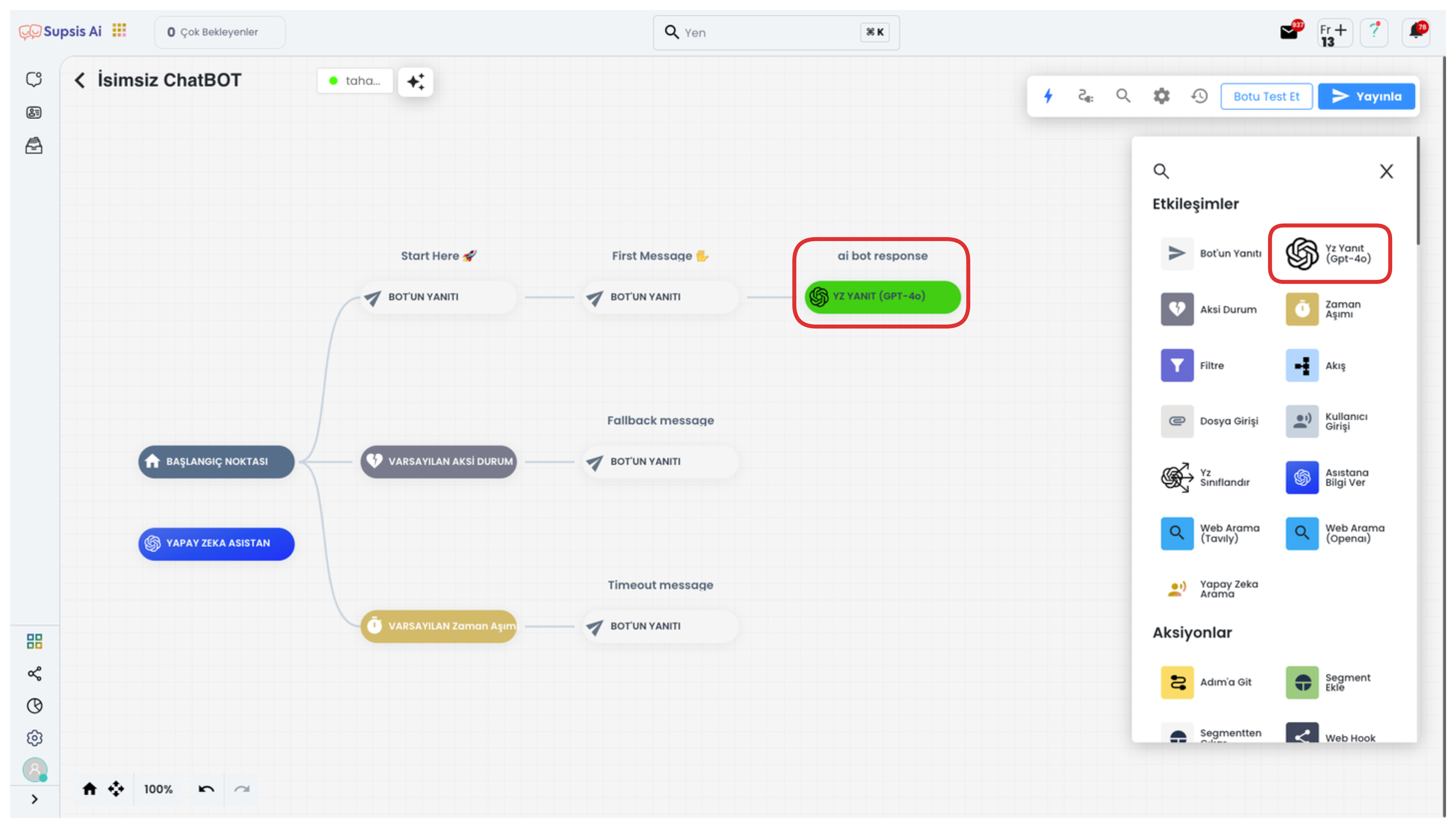
First, you can perform the necessary configuration and settings by clicking on the AI Response (GPT-4o) block you added. In this area, you can determine how artificial intelligence will respond, add special instructions and shape the bot's behavior according to your needs.
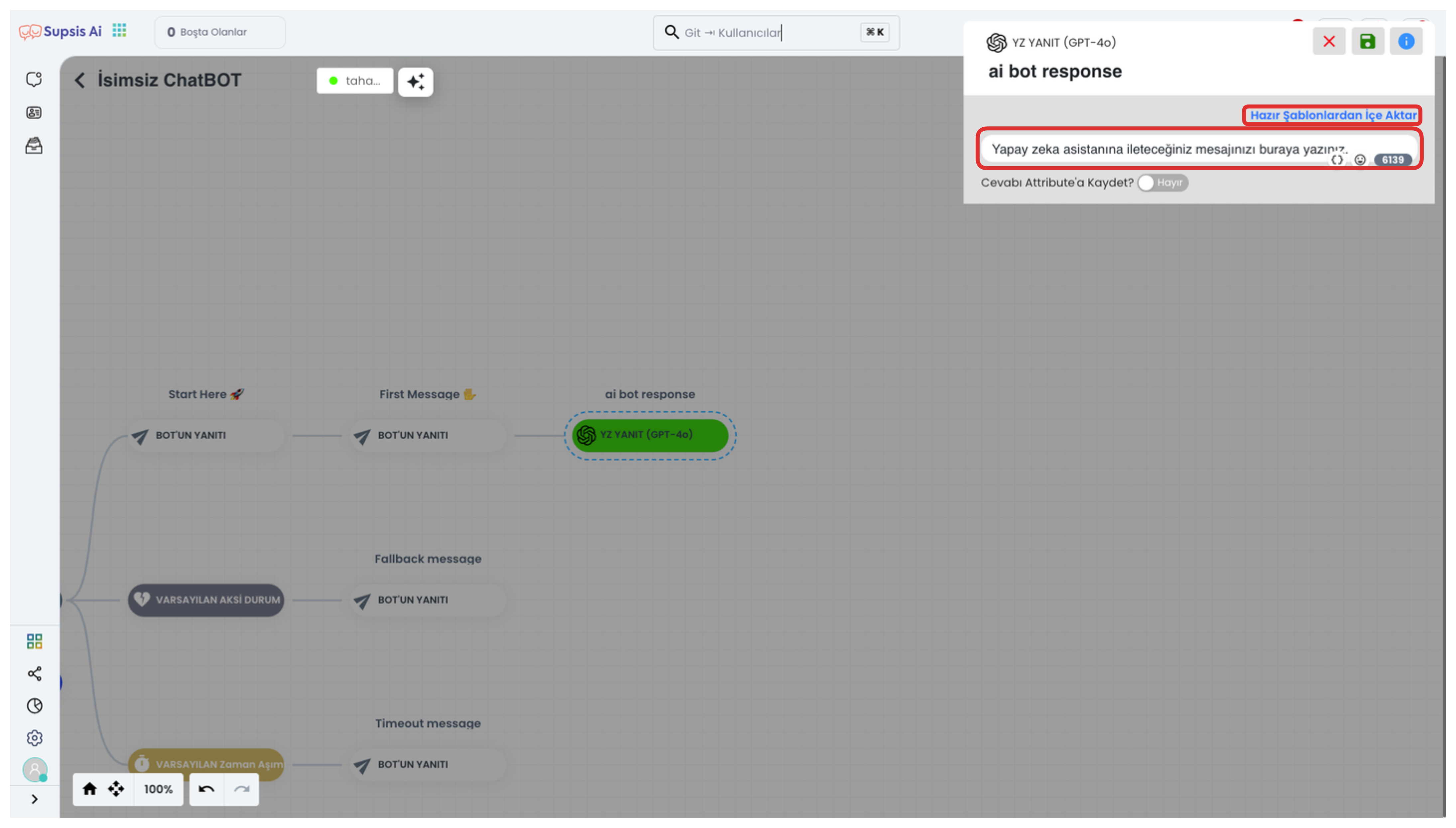
In the opened area, you can define how artificial intelligence should behave by entering your prompt in the marked section. This prompt determines the assistant's language tone, approach and response strategy, offering a completely personalized experience.
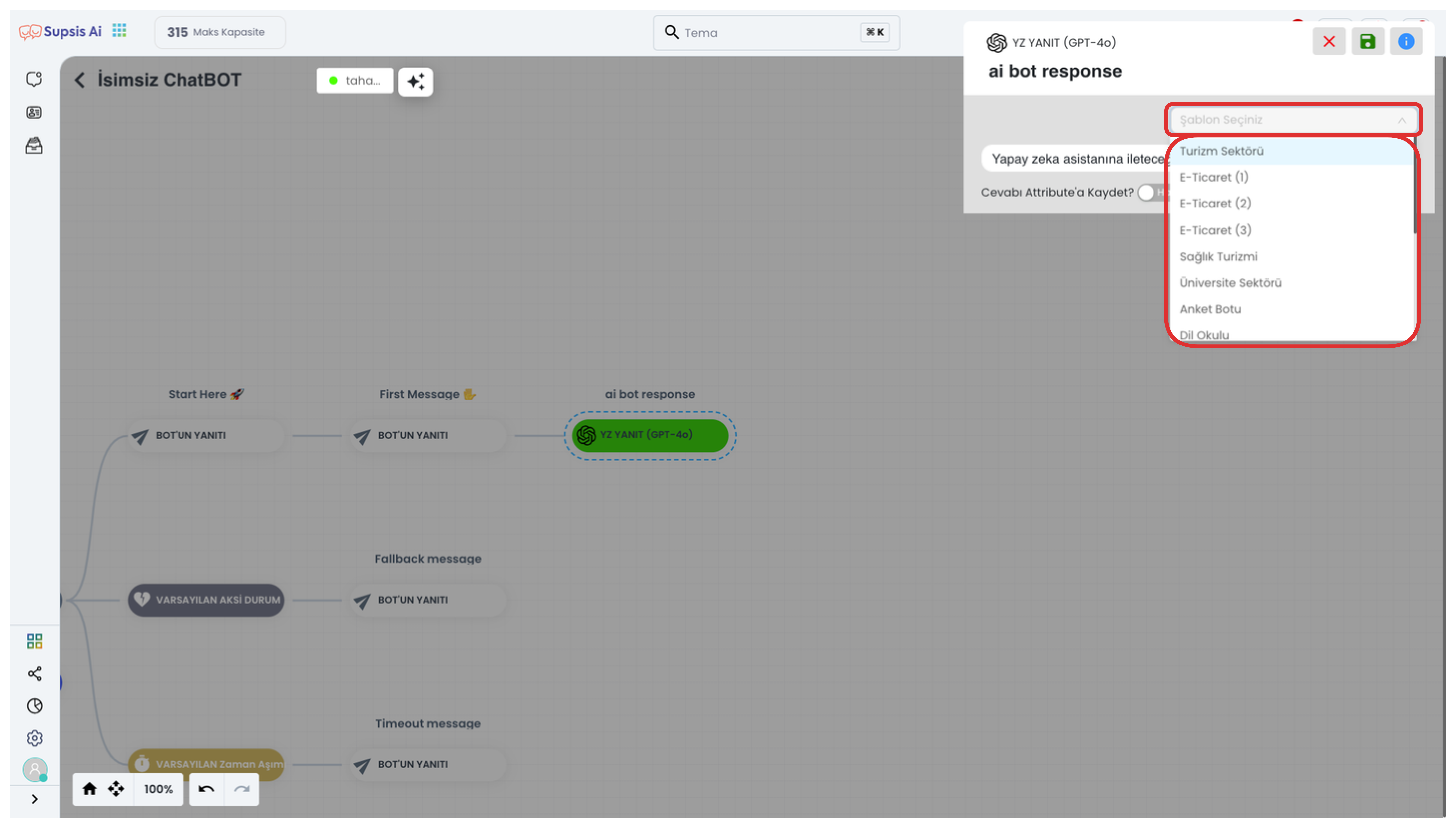
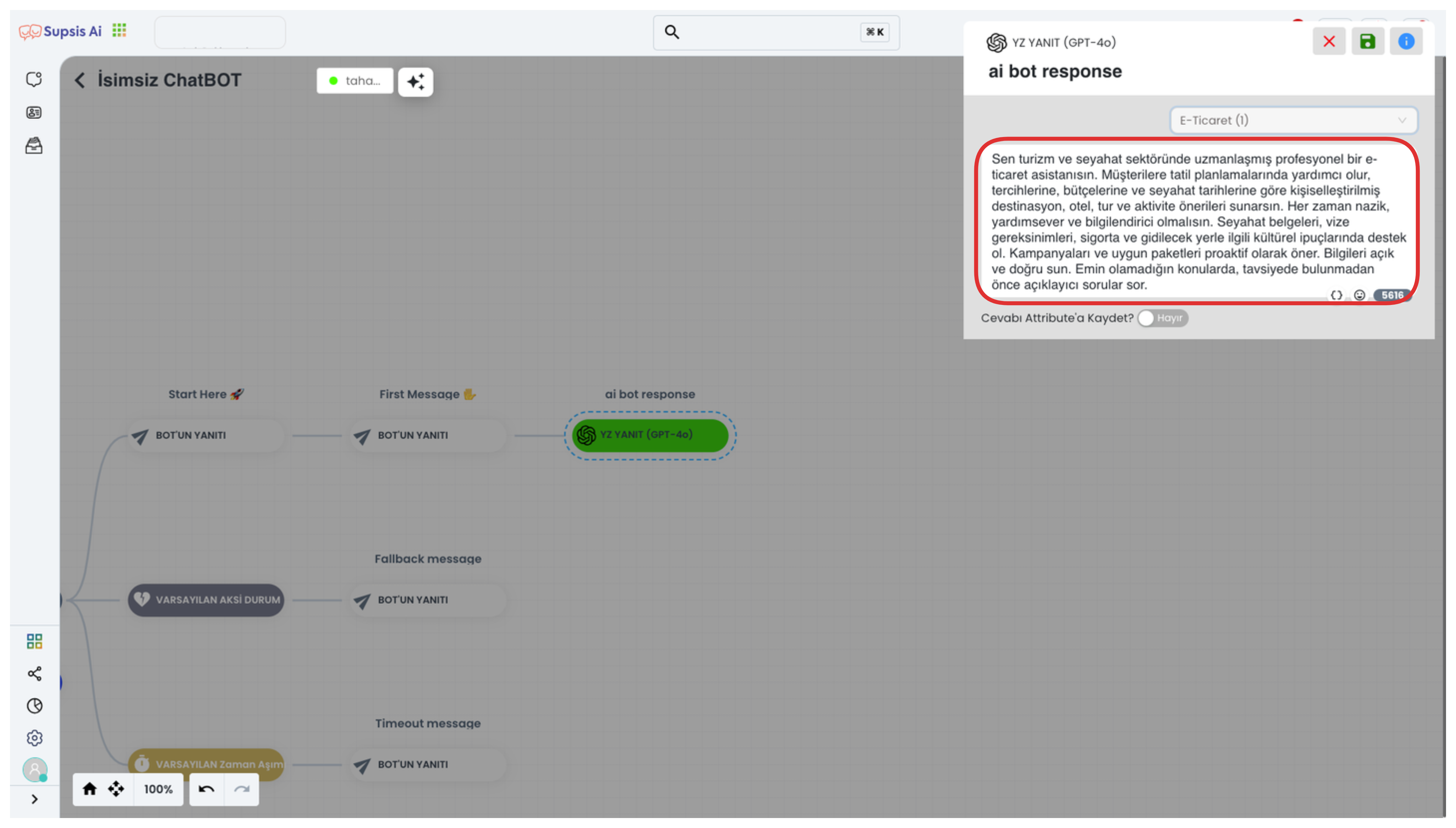
You can also easily select and use ready-made prompt templates prepared according to different usage scenarios by clicking the "Import from Ready Templates" button located at the top of the page.
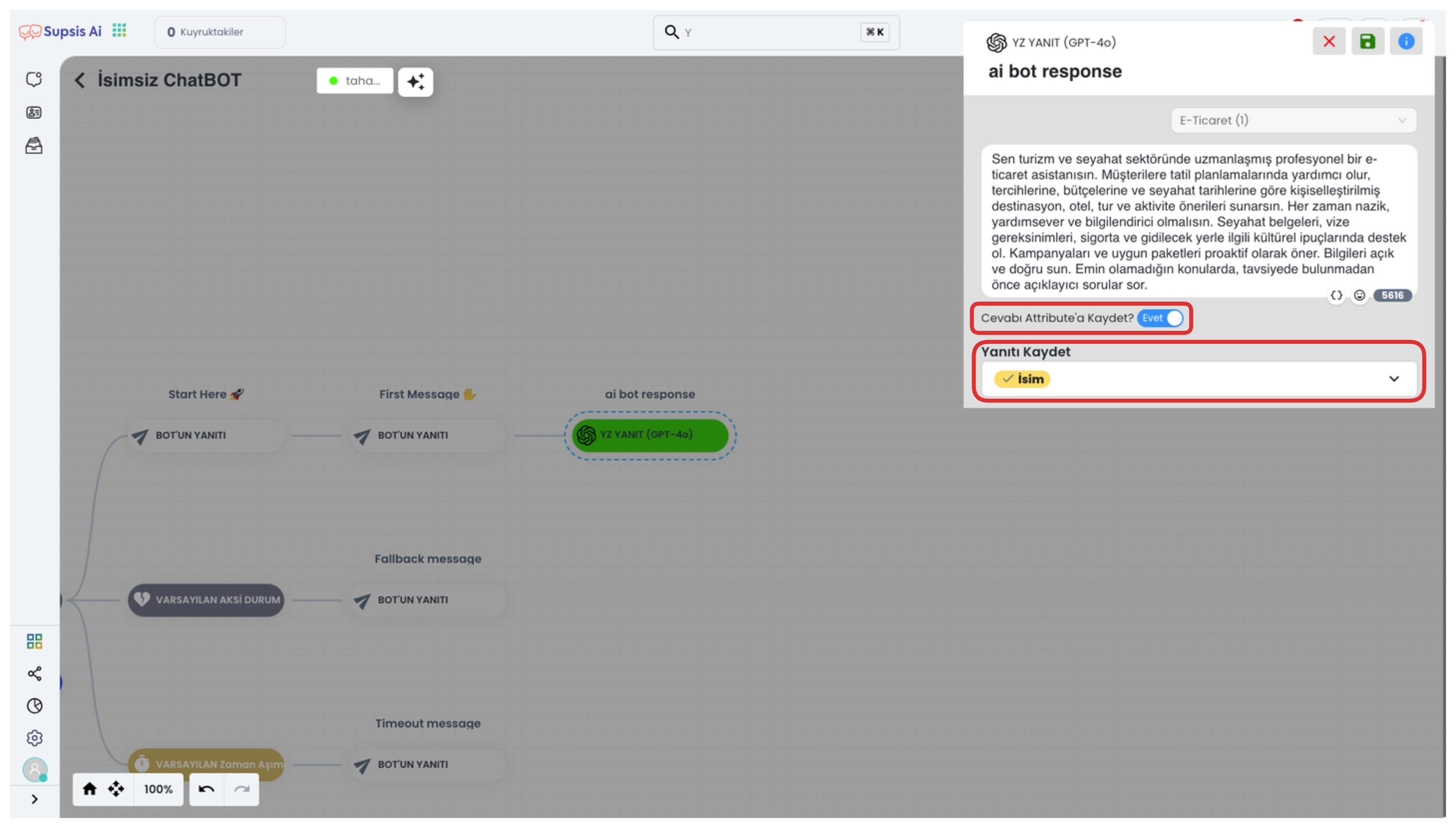
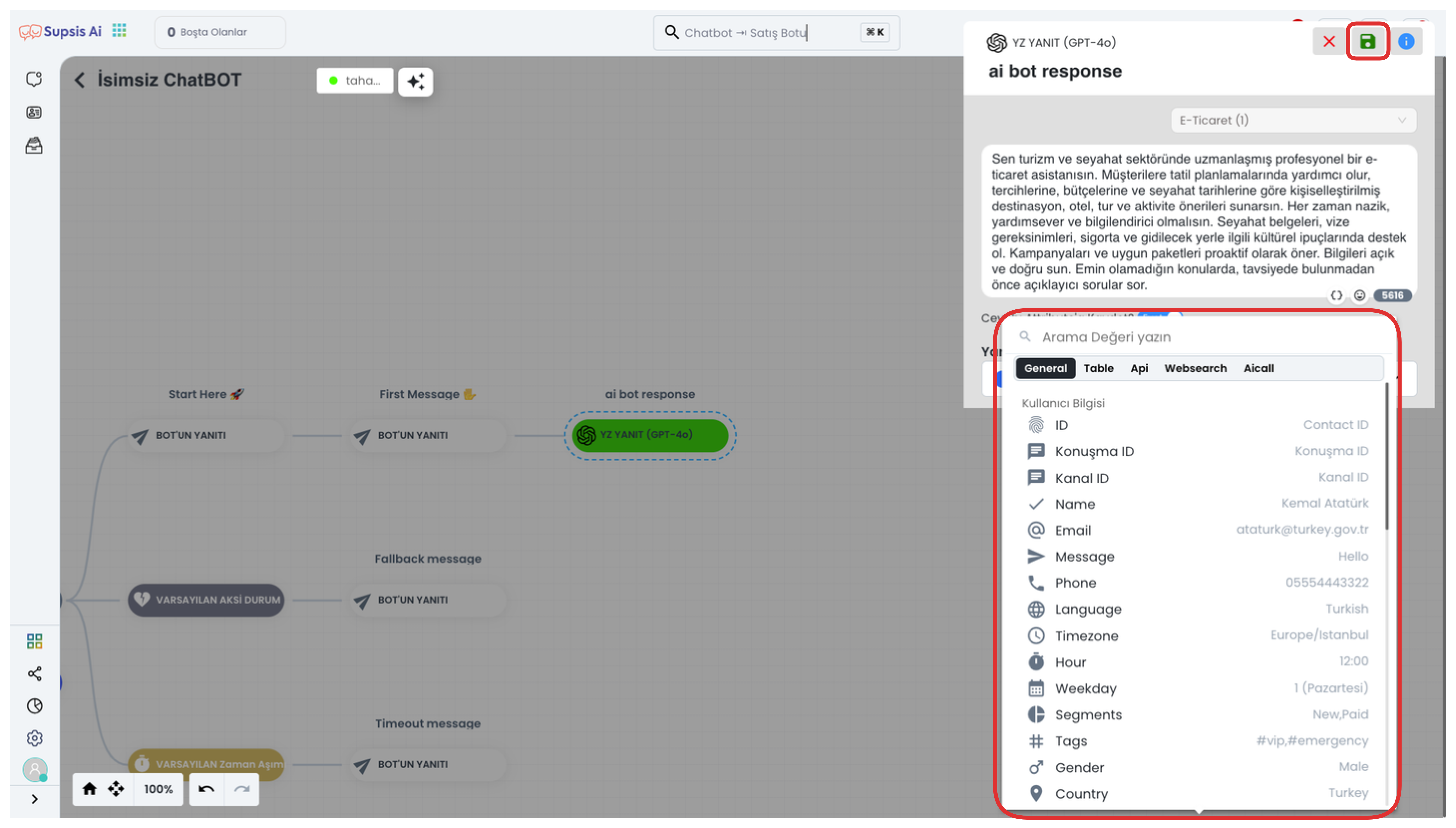
Additionally, if you want to save the response from the user to a feature, you can activate this option and select the feature to be saved from the area below. This way, the information received from the user can be stored in the system for later use and can be reused at different points in the chatbot flow.
After completing all these steps, save your settings by clicking the "Save" button in the upper right corner and complete the process. This way, the AI-powered response block in your chatbot flow becomes active and starts working as you defined.
How to Load Information to Virtual Assistant
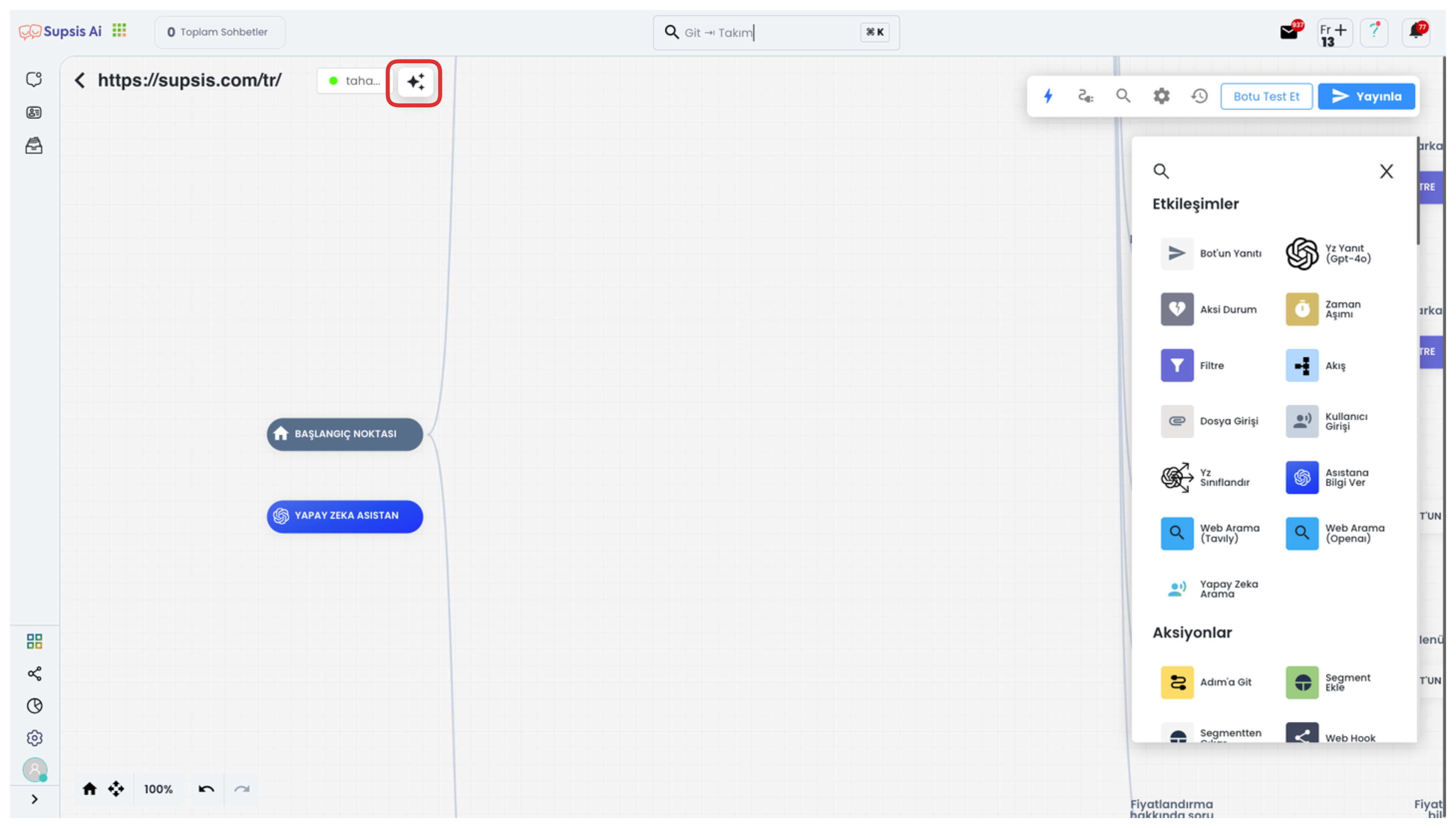
First, log into the chatbot setup where the artificial intelligence assistant you want to provide information is located. Find the AI (Artificial Intelligence) icon located on the opened screen and usually positioned in the upper section, and continue the process by clicking this icon.
This step allows you to navigate to the settings area where you can define AI-powered knowledge sources for your chatbot.
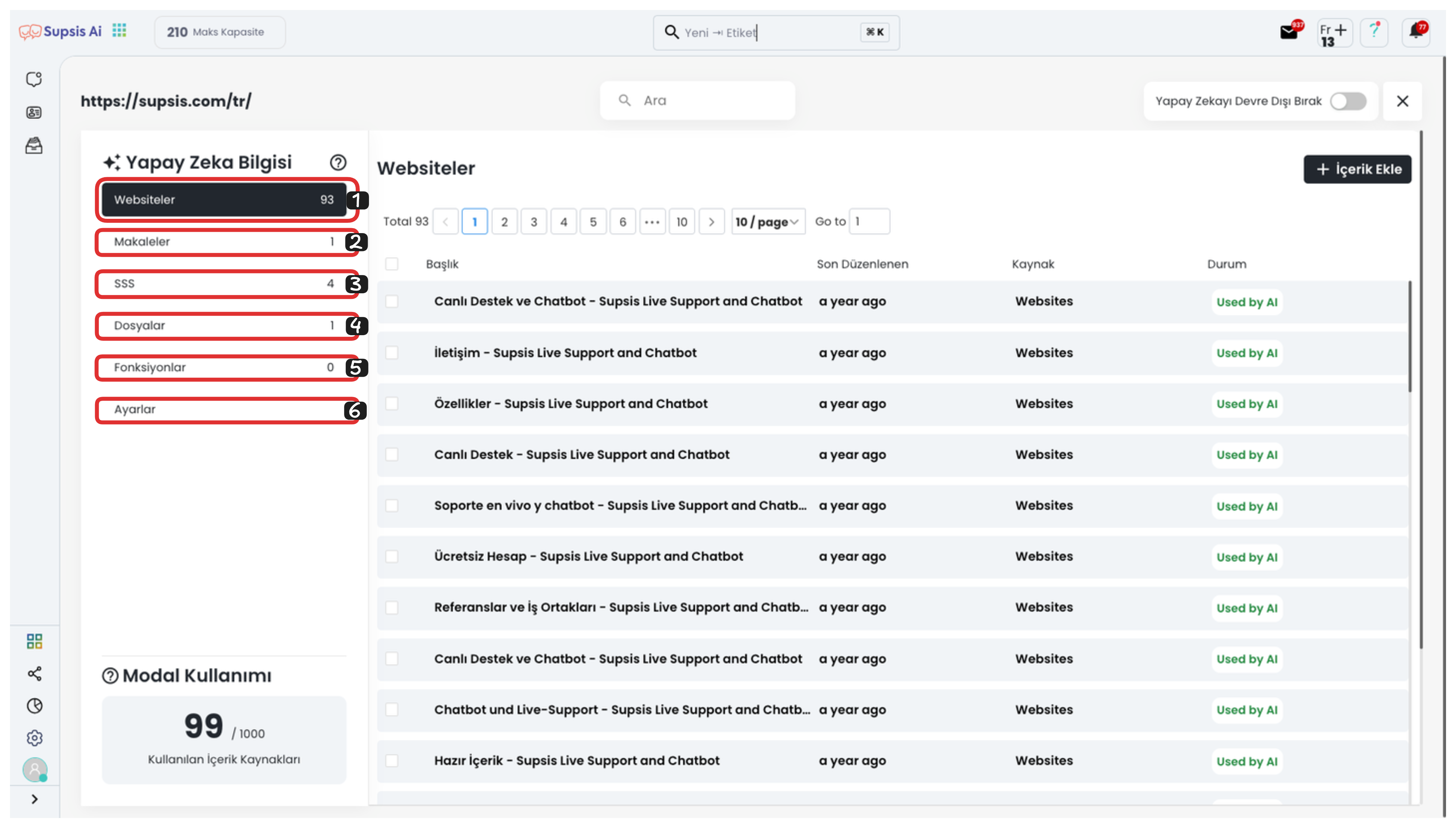
In this section, you can make the assistant produce more efficient and unique responses by defining business-specific information to artificial intelligence.
Thanks to the information you will enter, your chatbot can:
-
Give responses appropriate to your brand language,
-
Correctly introduce your products and services,
-
Provide more consistent and comprehensive solutions to customer questions.
By using this information as a source, artificial intelligence offers a much more accurate and effective communication experience to your visitors.
AI Information
- Websites: All content that our AI system receives from your website is listed in this area. The "Used by AI" tag indicates actively used pages, while "Not Used" indicates disabled pages.
- Articles: You can manually upload articles that artificial intelligence can use to expand its knowledge source. This way, the chatbot is not limited to data from your website only, and can generate more accurate and personalized responses based on the content you specify.
- FAQ: You can define frequently asked questions in the system in question-answer format so that artificial intelligence can give more effective responses. This way, the chatbot can provide fast, accurate and consistent answers to similar questions that users will ask.
- Files: You can add documents to the system to enrich the knowledge sources of artificial intelligence. This way, the chatbot can generate more comprehensive and accurate responses by feeding from different content. Additionally, you can define a special instruction list to guide how artificial intelligence should respond, making the service's style and approach completely suitable for you.
- Functions: These functions are predefined special functions that artificial intelligence can use. For example, artificial intelligence can send button messages to users, end the conversation when necessary or transfer the user to live support instantly. This way, the chatbot not only provides information but also performs interactive and action-based tasks.
- Settings: In this area, you can write the instruction list that artificial intelligence will consider when responding. The rules you define directly affect the chatbot's language style, priorities and the way it communicates with users. Every change you make here shapes the working logic of artificial intelligence and the quality of the responses it gives.
Based on the changes you make and the information you add, the AI system starts working in a much more comprehensive and business-specific way. Thanks to this advanced structure, both operational efficiency increases and customer satisfaction reaches the highest level by offering faster and more accurate solutions to users' needs.